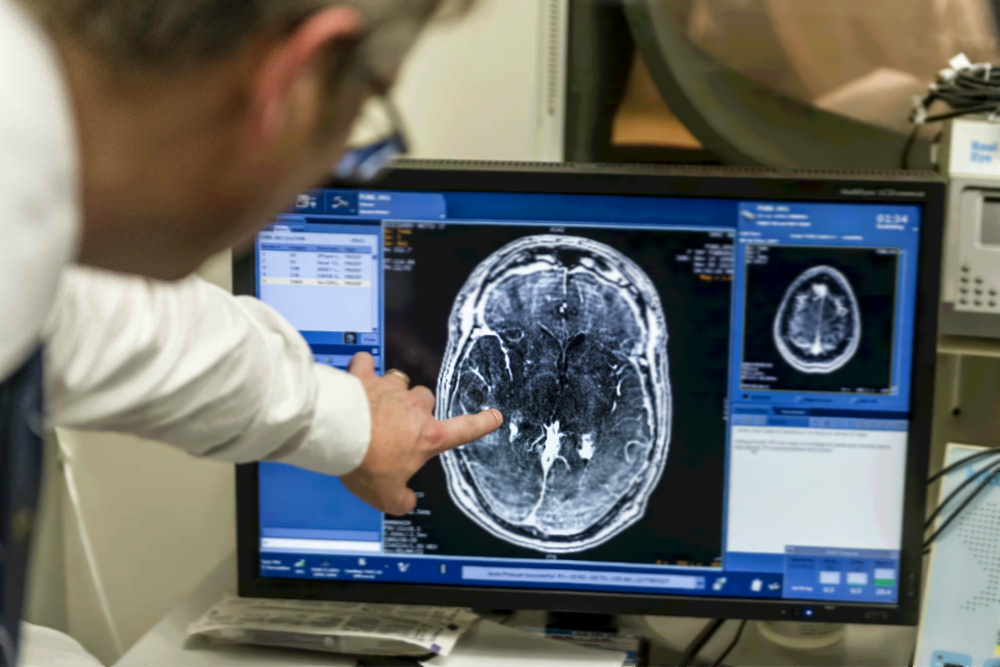Ultrasound helped for the first time to overcome the blood-brain barrier: the technique will increase the effectiveness of chemotherapy for brain tumors
Scientists at Sunnybrook Hospital used focused ultrasound for non-invasive drug delivery through the blood to the tumor in the patient's brain: they were able to overcome the barrier between the blood cells and the brain cells, which is the main obstacle to treating brain tumors. The technique will open up new opportunities for the delivery of potentially much more effective drugs than those currently used.

The first participant is a volunteer with a brain tumor
Chemotherapy for brain tumors is not an effective method of treatment, because drugs hardly penetrate the hemato-encephalic barrier . This is the physiological barrier between the circulatory system and the central nervous system, which all vertebrates have. The barrier protects the brain from microorganisms circulating in the blood, toxins and other factors, including medications.
“We are inspired by the fact that we were able to temporarily open this barrier from the patient in order to deliver chemotherapy drugs directly to a brain tumor,” say scientists from the Sunnybrook hospital.
')
A team of researchers injected a chemotherapy drug into the patient's bloodstream, followed by sending microscopic bubbles into the bloodstream — smaller than red blood cells. Then the scientists acted on the blood vessels in the vicinity of the cancer using directional sound waves. The waves compressed and expanded the microscopic vesicles, causing them to vibrate - so they weakened the tight connections of endothelial cells, which are the main element of the hemato-encephalic barrier structure.

The contrast agent helps to see the overcoming of the hemato-encephalic barrier on MRI
Less than a day later, doctors surgically removed the tumor and its surrounding tissues to measure differences in the concentration of the drug in areas that were affected by ultrasound, and areas where there was no such effect.
Scientists note that some of the most innovative treatments for malignant brain tumors are not able to reach the tumor because of this barrier. The new technique will open up new opportunities for the delivery of potentially much more effective drugs, commented on the discovery of Dr. Toddd Mainprayz, Associate Professor, Department of Neurosurgery, University of Toronto.
The study will be attended by nine more volunteers recorded for surgical removal of tumors.

The first participant is a volunteer with a brain tumor
Chemotherapy for brain tumors is not an effective method of treatment, because drugs hardly penetrate the hemato-encephalic barrier . This is the physiological barrier between the circulatory system and the central nervous system, which all vertebrates have. The barrier protects the brain from microorganisms circulating in the blood, toxins and other factors, including medications.
“We are inspired by the fact that we were able to temporarily open this barrier from the patient in order to deliver chemotherapy drugs directly to a brain tumor,” say scientists from the Sunnybrook hospital.
')
A team of researchers injected a chemotherapy drug into the patient's bloodstream, followed by sending microscopic bubbles into the bloodstream — smaller than red blood cells. Then the scientists acted on the blood vessels in the vicinity of the cancer using directional sound waves. The waves compressed and expanded the microscopic vesicles, causing them to vibrate - so they weakened the tight connections of endothelial cells, which are the main element of the hemato-encephalic barrier structure.

The contrast agent helps to see the overcoming of the hemato-encephalic barrier on MRI
Less than a day later, doctors surgically removed the tumor and its surrounding tissues to measure differences in the concentration of the drug in areas that were affected by ultrasound, and areas where there was no such effect.
Scientists note that some of the most innovative treatments for malignant brain tumors are not able to reach the tumor because of this barrier. The new technique will open up new opportunities for the delivery of potentially much more effective drugs, commented on the discovery of Dr. Toddd Mainprayz, Associate Professor, Department of Neurosurgery, University of Toronto.
The study will be attended by nine more volunteers recorded for surgical removal of tumors.
Source: https://habr.com/ru/post/366969/
All Articles